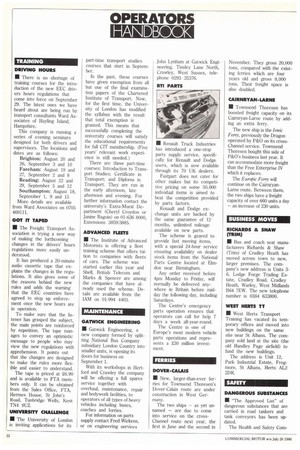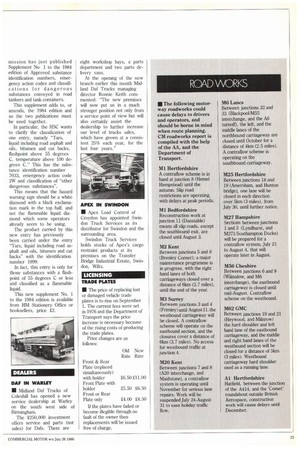DANGEROUS SUBSTANCES • "The Approved List" of dangerous substances that
Page 24

Page 25

If you've noticed an error in this article please click here to report it so we can fix it.
are carried in road tankers and tank conveyors has been updated.
The Health and Safety Corn mission has just published Supplement No 1 to the 1984 edition of Approved substance identification numbers, emergency action codes and classifications for dangerous substances conveyed in road tankers and tank containers.
This supplement adds to, or amends, the 1984 edition and so the two publications must be used together.
In particular, the HSC wants to clarify the classification of one entry, namely "Tars, liquid including road asphalt and oils, bitumen and cut backs, flashpoint above 55 degrees C, temperature above 100 degrees C." This has the substance identification number 7033, emergency action code 2W and classification of "other dangerous substances".
This means that the hazard warning sign should be a white diamond with a black exclamation mark in the top half, and not the flammable liquid diamond which some operators already seem to be using.
The product carried by this new entry has previously been carried under the entry "Tars, liquid including road asphalt and oils, bitumen and cut backs' with the identification number 1999.
In fact, this entry is only for those substances with a flashpoint of 55 degrees C or less and classified as a flammable liquid.
This new supplement No. 1 to the 1984 edition is available from HM Stationery Office or booksellers, price 22.




















































































































